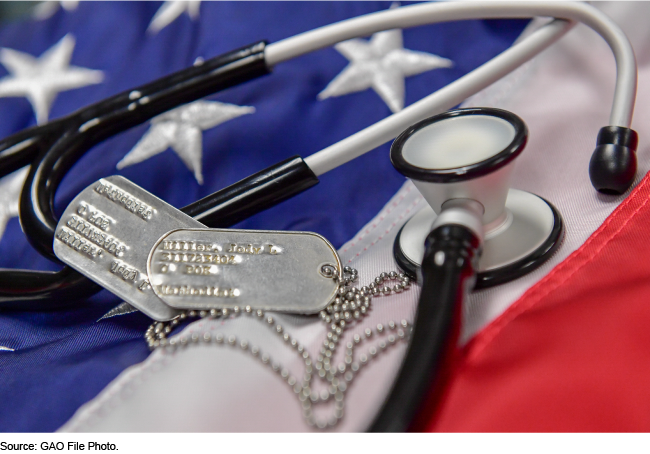VA Health Care: Community Living Centers Were Commonly Cited for Infection Control Deficiencies Prior to the COVID-19 Pandemic
Fast Facts
Thousands of veterans rely on nursing home care provided or paid for by the Department of Veterans Affairs. Ensuring the quality of care in VA-owned and -operated community living centers has become even more critical with the emergence of COVID-19.
As part of our ongoing review of center care quality, we examined deficiencies in infection prevention and control practices that inspections found at 135 centers before the pandemic (FY 2015-2019).
95% of inspected centers were cited for infection control deficiencies such as failure to use gowns and gloves or to clean reusable items
62% were cited for these deficiencies in consecutive years

Highlights
What GAO Found
The Department of Veterans Affairs (VA) is responsible for overseeing the quality of nursing home care provided to residents in VA-owned and -operated community living centers (CLC). VA models its oversight process on the methods used by the Centers for Medicare & Medicaid Services, which uses inspections of nursing homes to determine whether the home meets federal quality standards. These standards require, for example, that CLCs establish and maintain an infection prevention and control program. VA uses a contractor to conduct annual inspections of the CLCs, and these contractors cite CLCs with deficiencies if they are not in compliance with quality standards. Infection prevention and control deficiencies cited by the inspectors can include situations where CLC staff did not regularly use proper hand hygiene or failed to correctly use personal protective equipment. Many of these practices can be critical to preventing the spread of infectious diseases, including COVID-19.
GAO analysis of VA data shows that infection prevention and control deficiencies were the most common type of deficiency cited in inspected CLCs, with 95 percent (128 of the 135 CLCs inspected) having an infection prevention and control deficiency cited in 1 or more years from fiscal year 2015 through 2019.
GAO also found that over the time period of its review, a significant number of inspected CLCs—62 percent—had infection prevention and control deficiencies cited in consecutive fiscal years, which may indicate persistent problems. An additional 19 percent had such deficiencies cited in multiple, nonconsecutive years.
Why GAO Did This Study
COVID-19 is a new and highly contagious respiratory disease causing severe illness and death, particularly among the elderly. Because of this, the health and safety of the nation’s nursing home residents—including veterans receiving nursing home care in CLCs—has been a particular concern.
GAO was asked to review the quality of care at CLCs. In this report, GAO describes the prevalence of infection prevention and control deficiencies in CLCs prior to the COVID-19 pandemic. Future GAO reports will examine more broadly the quality of care at CLCs and VA’s response to COVID-19 in the nursing home settings for which VA provides or pays for care.
For this report, GAO analyzed VA data on deficiencies cited in CLCs from fiscal years 2015 through 2019. Using these data, GAO determined the most common type of deficiency cited among CLCs, the number of CLCs that had infection prevention and control deficiencies cited, and the number of CLCs with repeated infection prevention and control deficiencies over the period from fiscal years 2015 through 2019. GAO also obtained and reviewed inspection reports and corrective action plans to describe examples of the infection prevention and control deficiencies cited at CLCs and the CLCs’ plans to remedy the noncompliance.
